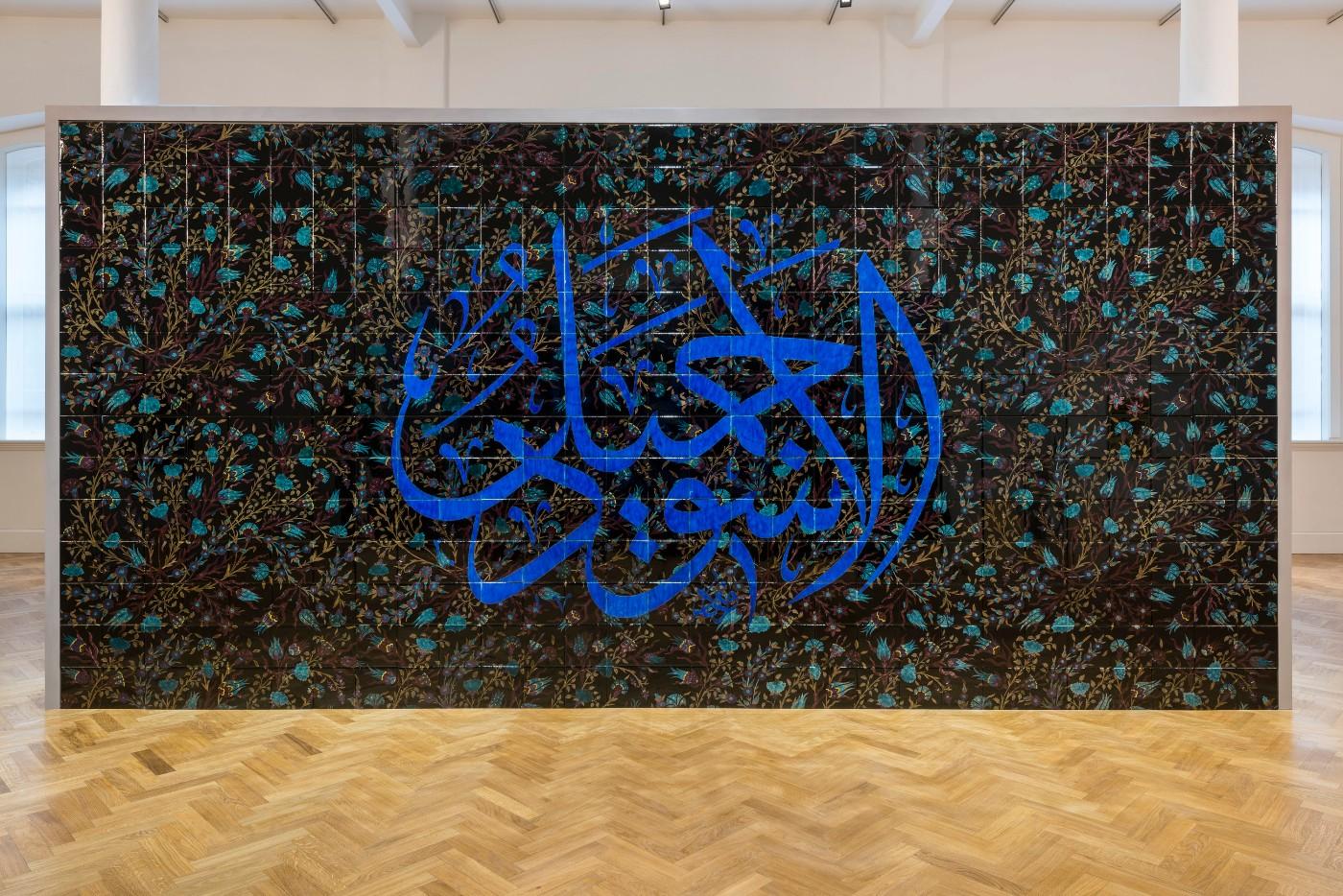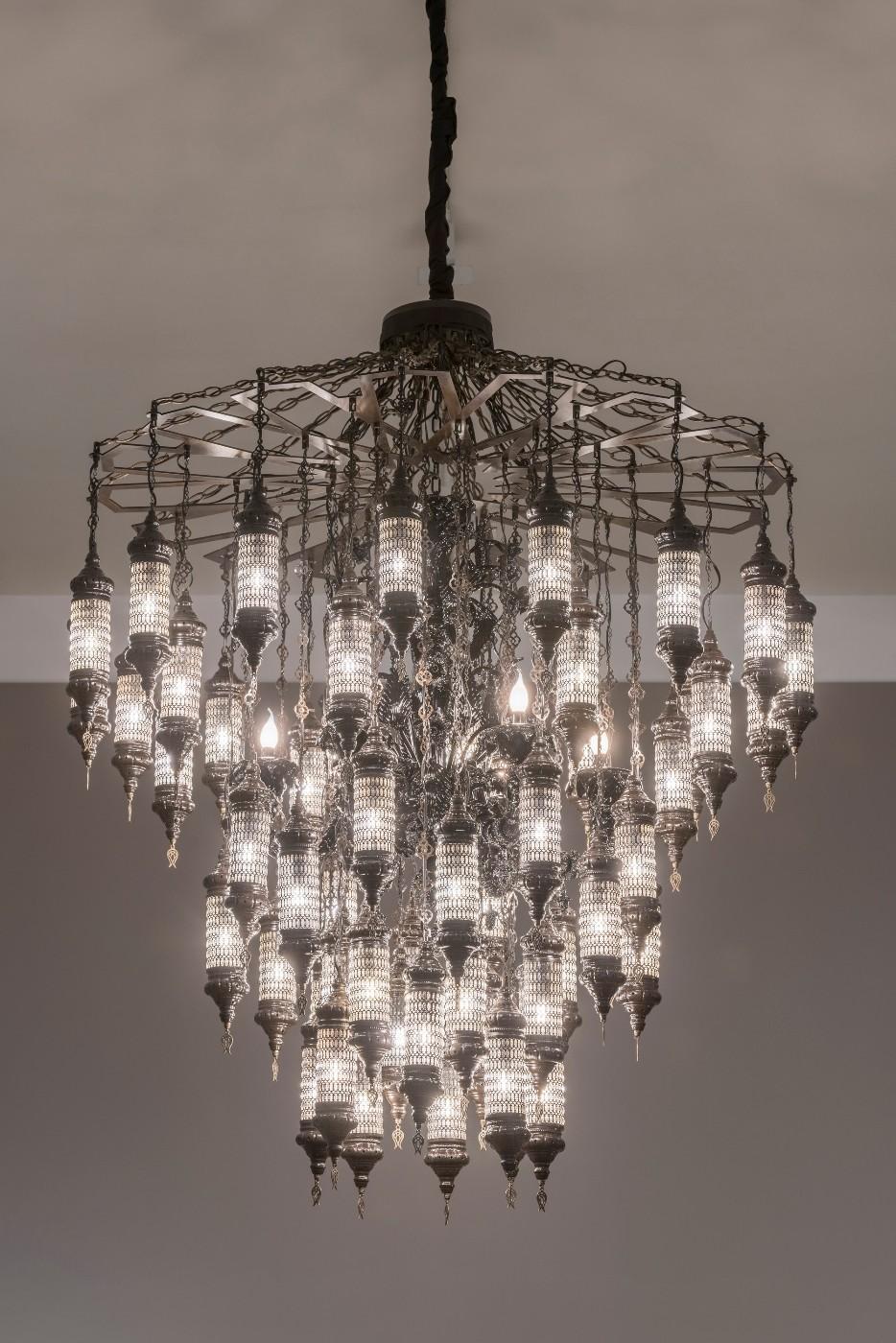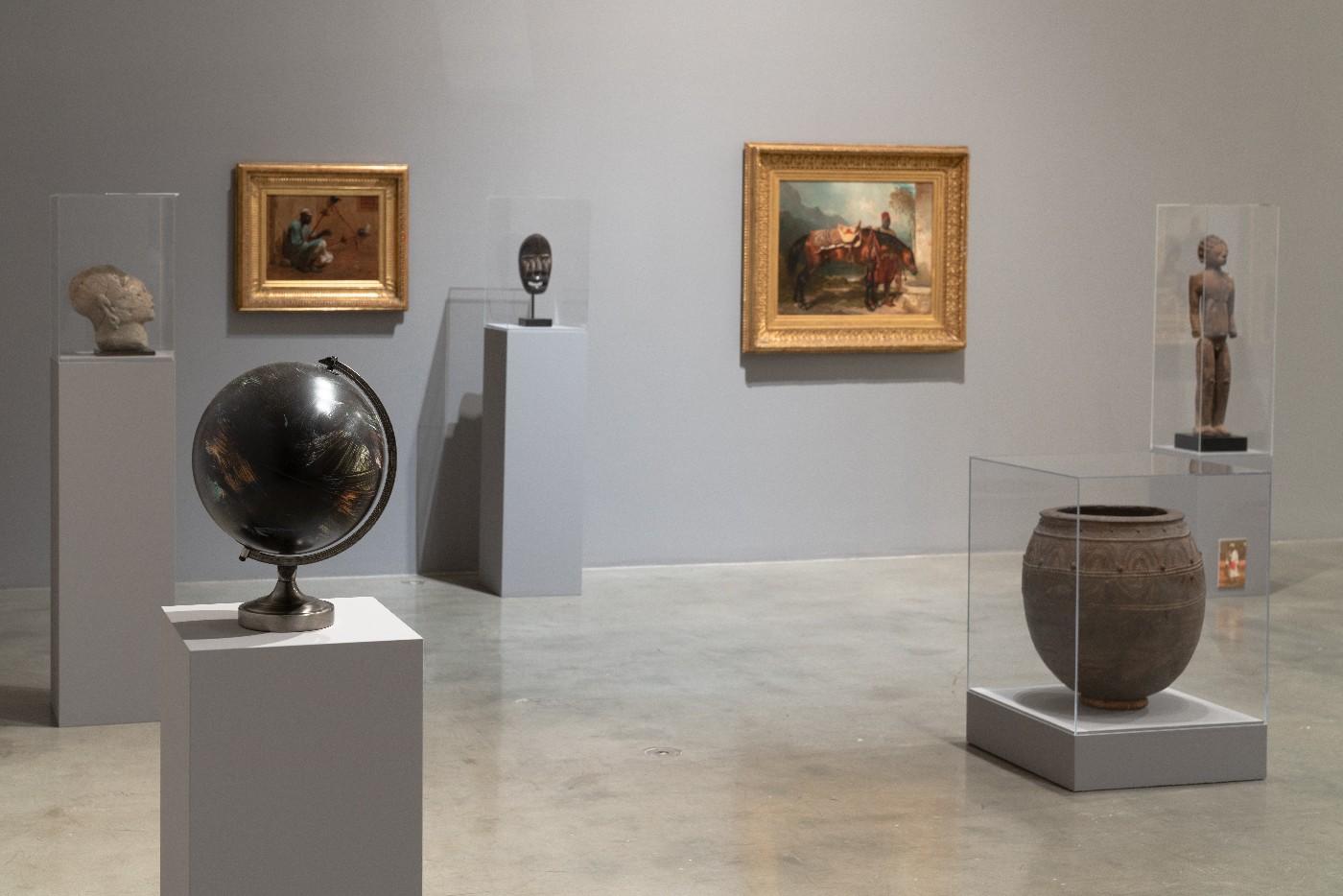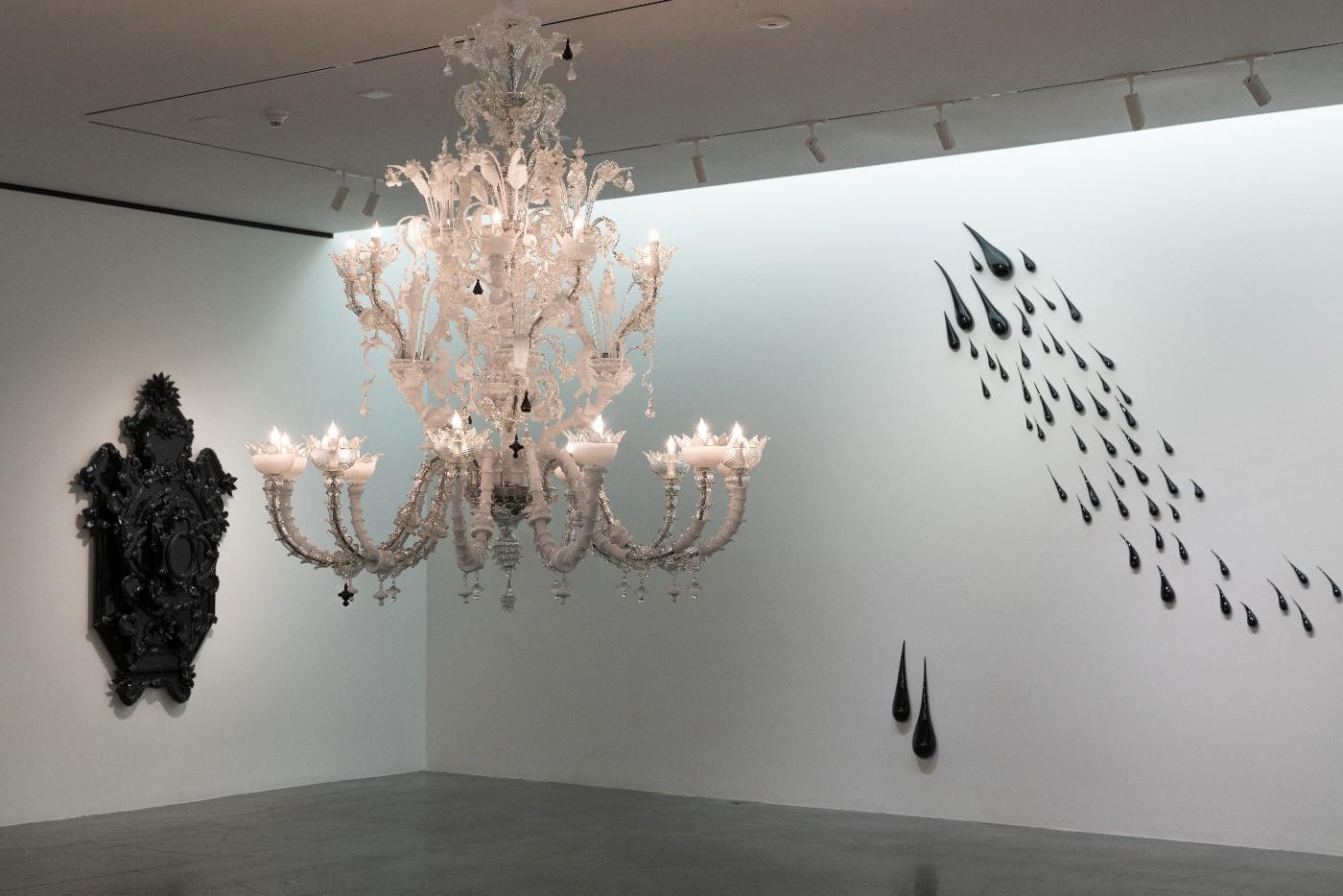Produced for the 15th Istanbul Biennial, Afro Kismet was conceptualized at the Pera Museum as a large-scale installation in which Wilson researched the presence of people of African descent in the Ottoman Empire and present-day Turkey. Afro Kismet references previous iterations of Wilson’s research for art biennials—in 1992-93, he participated in the 4th International Cairo Biennial, and in 2003, represented the United States at the 50th Venice Biennale—by showing objects that meld diverse cultural influences. For instance, the exhibition’s two black chandeliers are a blend of Ottoman metal elements and glassware from the island of Murano. The chandeliers are also Wilson's visual reinterpretation of the derogatory Turkish expression, gündüz feneri, or “daytime torch”—used to describe and “other” black people.

Fred Wilson, Black is Beautiful, 2017
On July 10th, Fred Wilson: Afro Kismet opened at Pace Gallery, New York after a four week run at Pace London this past Spring. Wilson was catapulted into notoriety with his revolutionary Mining the Museum exhibition (1992), a storage raid-cum-excavation that destabilized the politics of display at the Maryland Historical Society.

Fred Wilson, Eclipse, 2017
According to the gallery, “For Pace in New York, Wilson will reconfigure the [Pera Museum] installation, which includes two chandeliers, two monumental Iznik tile walls, four black glass drip works, and a globe sculpture, as well as installations and vitrine pieces that gather cowrie shells, engravings, photographs, a Yoruba mask, and furniture, among other objects the artist discovered in his frequent trips to Istanbul throughout 2016 and 2017.”
The Iznik tile walls—one aubergine and one black—were done in collaboration with Turkish çini makers and feature Arabic calligraphy. The phrases translate to “Mother Africa” and “Black is Beautiful”, respectively.

Fred Wilson, Untitled (Zadib, Sokoto, Tokolor, Samori, Veneto, Zanzibar, Dhaka, Macao), 2011
Fred Wilson: Afro Kismet will be on view in New York until August 17th, and will then travel to the Gibbes Museum of Art in Charleston.






























